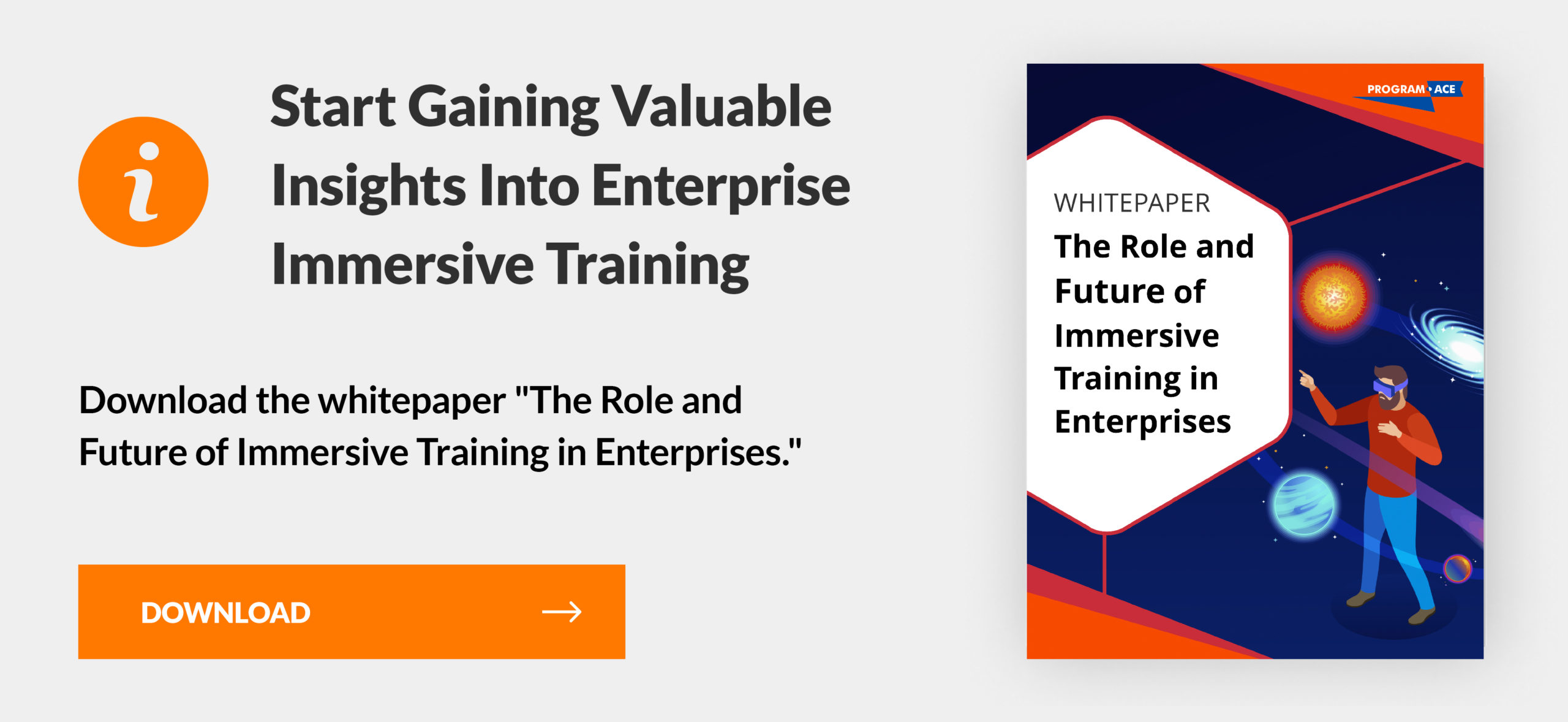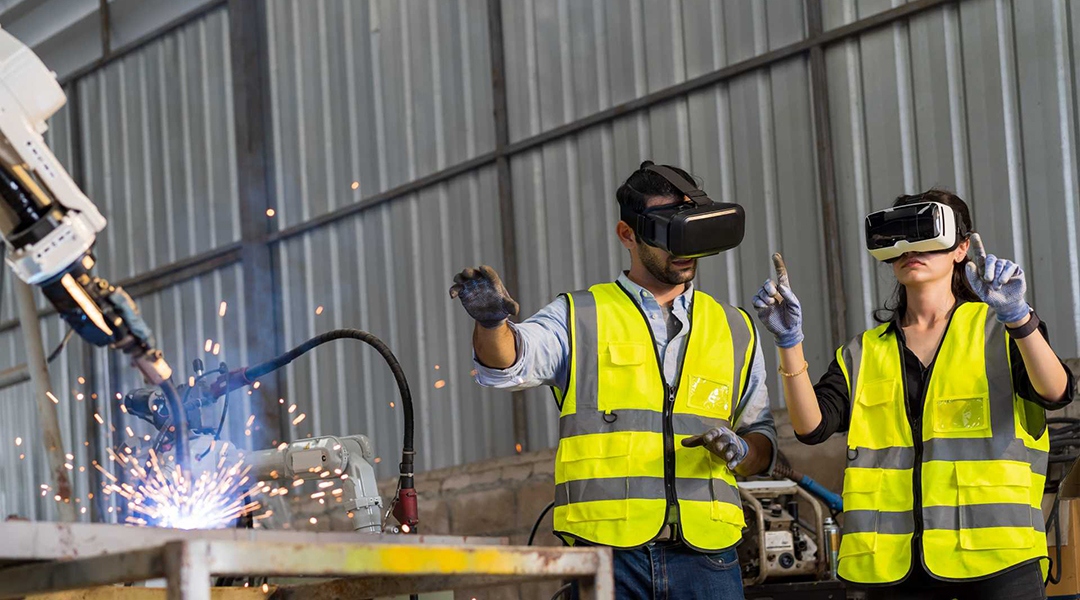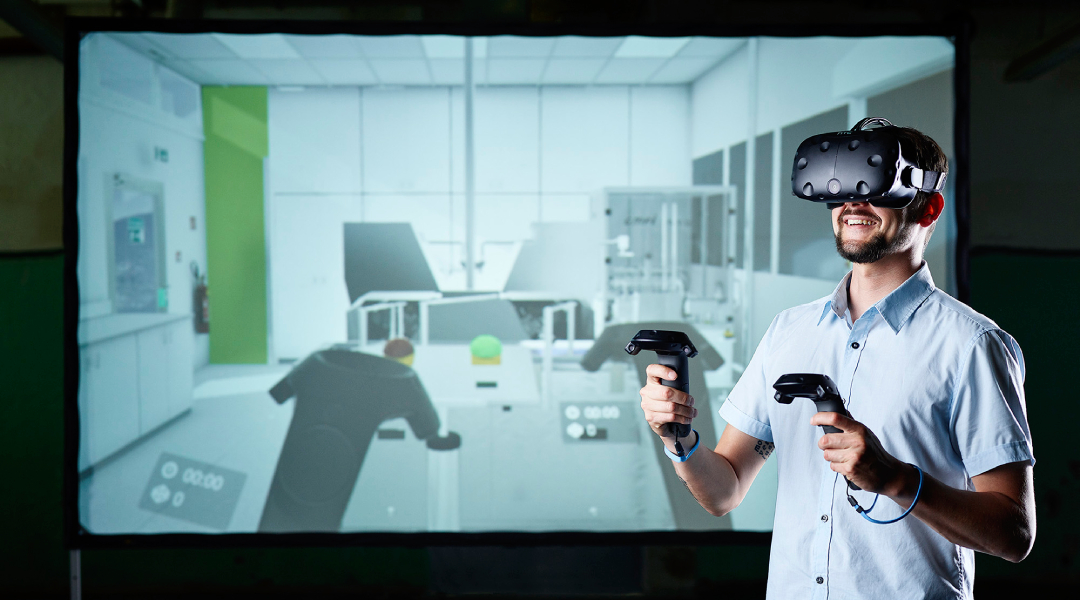Scenario-based learning is transforming how employees acquire skills and knowledge. By immersing trainees in real-world scenarios, they gain practical experience that traditional methods can't provide. A virtual reality training company leverages this approach to create highly effective training programs. Learners engage in simulated environments replicating real challenges, enhancing problem-solving and decision-making abilities. This method is especially beneficial for high-stakes industries such as healthcare, emergency response, and manufacturing, where mistakes can be costly.
Companies adopting scenario-based learning report higher retention rates and better preparedness among their staff. Virtual reality training companies are at the forefront of this shift, offering tailored solutions that meet the specific needs of each organization. These companies provide an engaging and impactful learning experience by integrating immersive technology with realistic scenarios. Embrace scenario-based learning to elevate your training programs and ensure your team is ready for any situation.
What Is Scenario-Based Learning? — Understanding its Power
Scenario-based learning immerses trainees in real-life situations to develop practical skills. Unlike traditional methods, this approach simulates realistic challenges, improving decision-making and problem-solving. What is scenario-based training? It's an educational technique that uses simulated environments to enhance learning outcomes.
The Concept and Definition
Scenario-based learning uses realistic scenarios to teach specific skills and knowledge. Instead of abstract concepts, learners engage with practical situations, gaining experience and confidence. What is scenario-based learning? It's a method where trainees face simulated challenges similar to real-life events. This technique emphasizes active participation, critical thinking, and immediate application of knowledge.
Scenario-based training involves creating detailed scenarios that reflect actual job tasks or emergencies. Trainees practice responses in a controlled environment, reducing risks and improving preparedness. This approach is particularly effective in fields requiring quick decision-making and complex problem-solving.
Virtual reality often enhances scenario-based learning by providing immersive, interactive experiences. VR can recreate high-risk situations safely, allowing trainees to practice without real-world consequences. In essence, scenario-based learning bridges the gap between theory and practice, making training more relevant and effective.
From Past to Present: History and Evolution
Scenario-based learning has roots in military and medical training, where realistic simulations prepare individuals for critical situations. Historically, early adopters used role-playing and case studies to teach complex skills. The method evolved as technology advanced, incorporating digital simulations and interactive elements. In the 1990s, computer-based training gained popularity, offering more sophisticated and scalable scenario-based training programs.
The introduction of virtual reality marked a significant leap in training methods. VR provided immersive environments where learners could interact with realistic scenarios. For example, virtual reality emergency training became a game-changer, allowing first responders to practice in life-like simulations without real-world risks. The development of VR technology enabled more detailed and varied scenarios, enhancing the training experience.
Modern scenario-based learning integrates AI and machine learning to create adaptive learning paths. These technologies analyze performance and adjust scenarios in real time, providing personalized feedback and challenges. Industries like healthcare, aviation, and manufacturing benefit from these advancements, ensuring their workforce is well-prepared for real-world tasks. Today, scenario-based learning is recognized as a crucial method for developing practical skills and ensuring high levels of preparedness in various fields.
All the Benefits of Scenario-Based Learning to Consider
The benefits of scenario-based learning include enhanced engagement, improved retention, and practical application of skills. This method ensures learners are better prepared for real-world challenges by providing immersive and interactive experiences.
Boosting Engagement through Interactive Learning
Interactive learning through scenario-based methods significantly boosts engagement. Trainees actively participate in realistic scenarios, which keeps them invested and motivated. This approach differs from traditional methods by involving learners directly in the training process, making it more dynamic and exciting. Each scenario presents a unique challenge that requires critical thinking and decision-making, fostering a deeper connection to the material.
Learners engaging with content meaningfully increases their interest and focus, leading to better outcomes. Interactive learning tools, such as virtual reality and digital simulations, enhance this experience by providing immersive environments. These tools replicate real-life situations, allowing trainees to practice and refine their skills in a controlled setting.
The hands-on nature of scenario-based learning also encourages participant collaboration and communication, further enhancing engagement. Organizations can create a more effective and enjoyable learning experience by incorporating realistic scenarios into training programs, ensuring that trainees remain engaged and motivated.
Strengthening Memory and Enhancing Knowledge Retention
Scenario-based learning strengthens memory and enhances knowledge retention by providing practical, hands-on experiences. Simulation training allows learners to apply concepts in realistic settings, reinforcing their understanding and recall. Traditional methods often rely on passive learning, where information is presented without active participation. In contrast, scenario-based training engages learners actively, making learning more memorable.
When trainees encounter real-world scenarios, they are more likely to remember the steps and decisions involved. The interactive nature of simulations helps embed knowledge deeper in the memory. Additionally, repeated exposure to realistic scenarios helps reinforce learning. Each time trainees navigate through a simulation, they reinforce their understanding and improve their retention.
Virtual reality further amplifies this effect by immersing learners in lifelike environments, making the experience more impactful. Overall, scenario-based learning, mainly through simulation training, provides a more practical approach to teaching complex concepts, ensuring that knowledge is retained longer and applied accurately.
Bridging Theory and Practice: Real-World Application
Scenario-based learning bridges the gap between theory and practice by providing real-world applications of learned concepts. Instead of merely understanding theories, trainees apply them in simulated environments that mimic actual job scenarios. This approach ensures that learners can translate theoretical knowledge into practical skills.
Real-world applications are crucial for fields that require precision and quick decision-making. Scenario-based training provides a safe space for learners to practice and refine their skills without the risk of real-world consequences. By engaging with realistic scenarios, trainees gain confidence in their abilities and are better prepared for real-life situations. The hands-on experience helps solidify their understanding and enhances their problem-solving capabilities.
Virtual reality and digital simulations play a significant role in this process, offering immersive environments where learners can practice repeatedly. This continuous practice effectively bridges the theory-practice gap, making scenario-based learning essential for developing practical, job-ready skills.
Use Cases of Scenario-Based Training
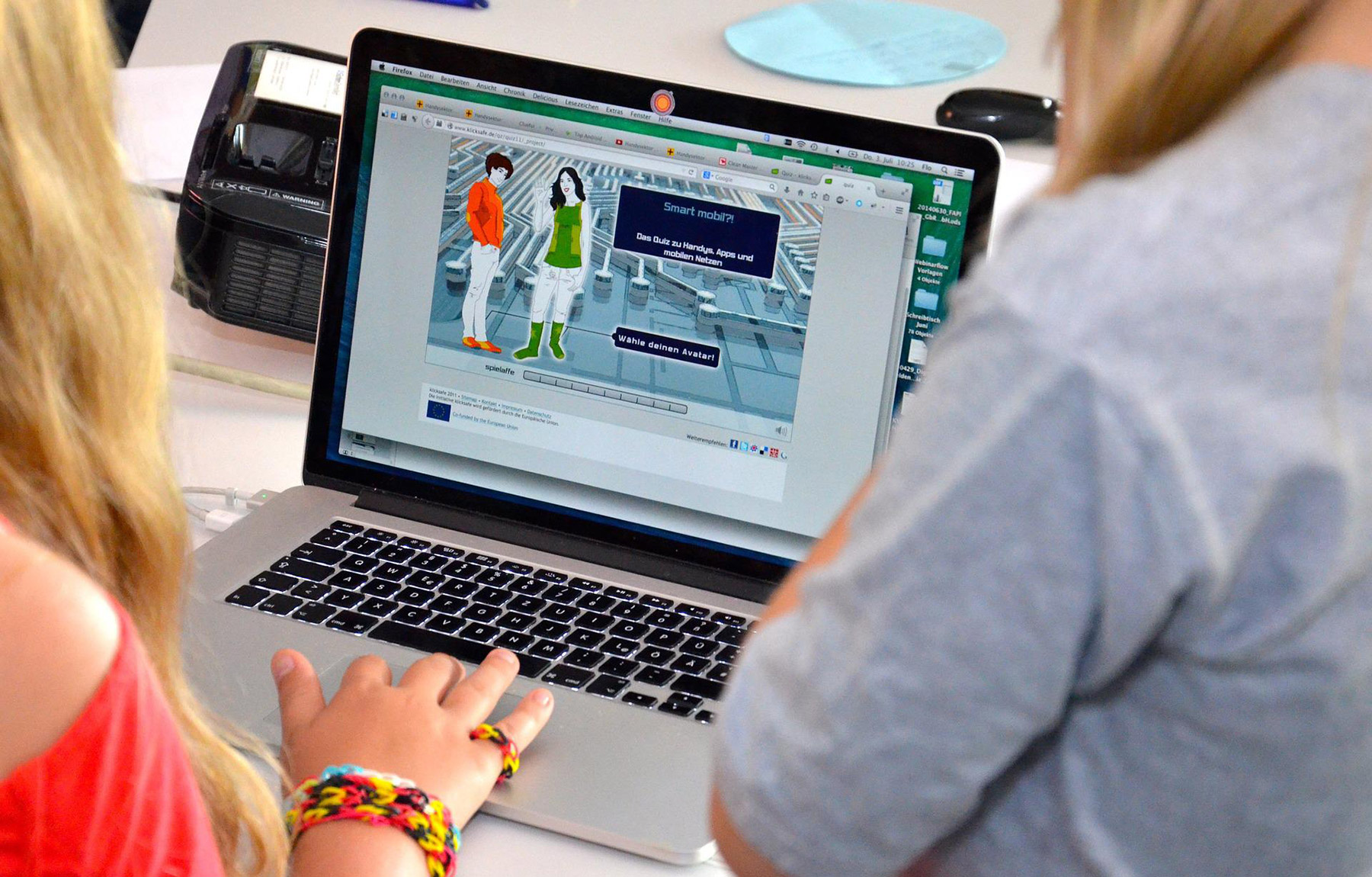
Scenario-based training has diverse applications across various fields. Critical use cases include corporate leadership development, emergency response training, customer service excellence, healthcare simulation training, and sales and negotiation skills.
Corporate Leadership Development
Reality-based training scenarios play a crucial role in corporate leadership development. Leaders face simulated challenges that mirror real-world issues, such as crisis management and strategic decision-making. This method allows aspiring leaders to practice critical skills in a controlled environment, building confidence and competence.
Participants enhance their problem-solving abilities, improve communication, and develop effective leadership strategies by engaging in realistic scenarios. This practical approach ensures that leaders are well-prepared to handle complex situations and lead their teams successfully.
Emergency Response Training
Emergency response training benefits significantly from scenario-based methods. Trainees engage in realistic simulations of crises, such as natural disasters, fires, and medical emergencies. This hands-on approach helps responders develop quick decision-making skills and effective emergency management strategies.
Practicing in controlled environments allows participants to experience high-pressure situations without real-world risks. Scenario-based training enhances preparedness and ensures that emergency responders are equipped with the necessary skills and confidence to handle actual crises efficiently and effectively.
Customer Service Excellence
Scenario-based training is essential for achieving customer service excellence. Employees engage in realistic scenarios that mimic common customer interactions, including handling complaints and resolving issues. This method helps trainees develop strong communication and problem-solving skills. By practicing in simulated environments, customer service representatives learn to manage difficult situations calmly and effectively.
Scenario-based training ensures that employees are prepared to provide exceptional service, leading to increased customer satisfaction and loyalty. This practical approach enhances the overall customer experience by fostering a well-trained and confident customer service team.
Healthcare Simulation Training
Healthcare simulation training uses scenario-based methods to improve patient care and safety. Medical professionals engage in realistic simulations of clinical situations, such as surgeries, emergency procedures, and patient interactions. This hands-on approach helps practitioners develop critical skills and enhance their decision-making abilities.
Scenario-based training provides a safe environment for medical staff to practice and refine their techniques without risking patient safety. The immersive nature of simulations ensures that healthcare providers are well-prepared to handle complex medical cases, leading to better patient outcomes and improved overall healthcare quality.
Sales and Negotiation Skills
Scenario-based training is highly practical for developing sales and negotiation skills. Trainees participate in realistic scenarios replicating sales pitches, client meetings, and negotiation sessions. This practical approach helps sales professionals refine their techniques, improve their communication skills, and develop effective strategies for closing deals.
By practicing in simulated environments, sales teams can experiment with different approaches and learn from their mistakes. Scenario-based training ensures that sales representatives are confident and well-prepared to engage with clients, leading to increased sales success and stronger client relationships.
Find your long-awaited virtual training solutions.
Scenario-Based Training Examples You Wish You’ve Known Before
Discover impactful scenario-based learning examples that transform training programs. These examples illustrate the effectiveness of realistic scenarios in enhancing skills across various fields, ensuring trainees are well-prepared for real-world challenges.
Corporate Triumphs with Scenario-Based Learning
Corporate training has seen remarkable successes with scenario-based learning. By incorporating realistic scenarios, companies improve employee performance and decision-making skills. Here are a few notable examples:
- Crisis management training. Executives face simulated corporate crises, such as financial downturns or PR disasters, allowing them to develop and refine their crisis response strategies.
- Leadership development. Aspiring leaders engage in scenarios that mirror real-life challenges, enhancing their problem-solving and strategic thinking abilities.
- Virtual reality simulations. Employees participate in immersive VR scenarios replicating complex work environments, fostering hands-on experience without real-world risks.
Real-world applications showcase the versatility of scenario-based learning in corporate settings. Companies like IBM use these methods to train their sales teams, simulating client interactions and negotiation processes. Similarly, Google employs scenario-based training for project management, helping teams navigate complex projects efficiently. Virtual reality simulations play a significant role in providing interactive and engaging training experiences that boost the retention and application of skills.
Scenario-Based Threat Incidents Training for Gap Inc.
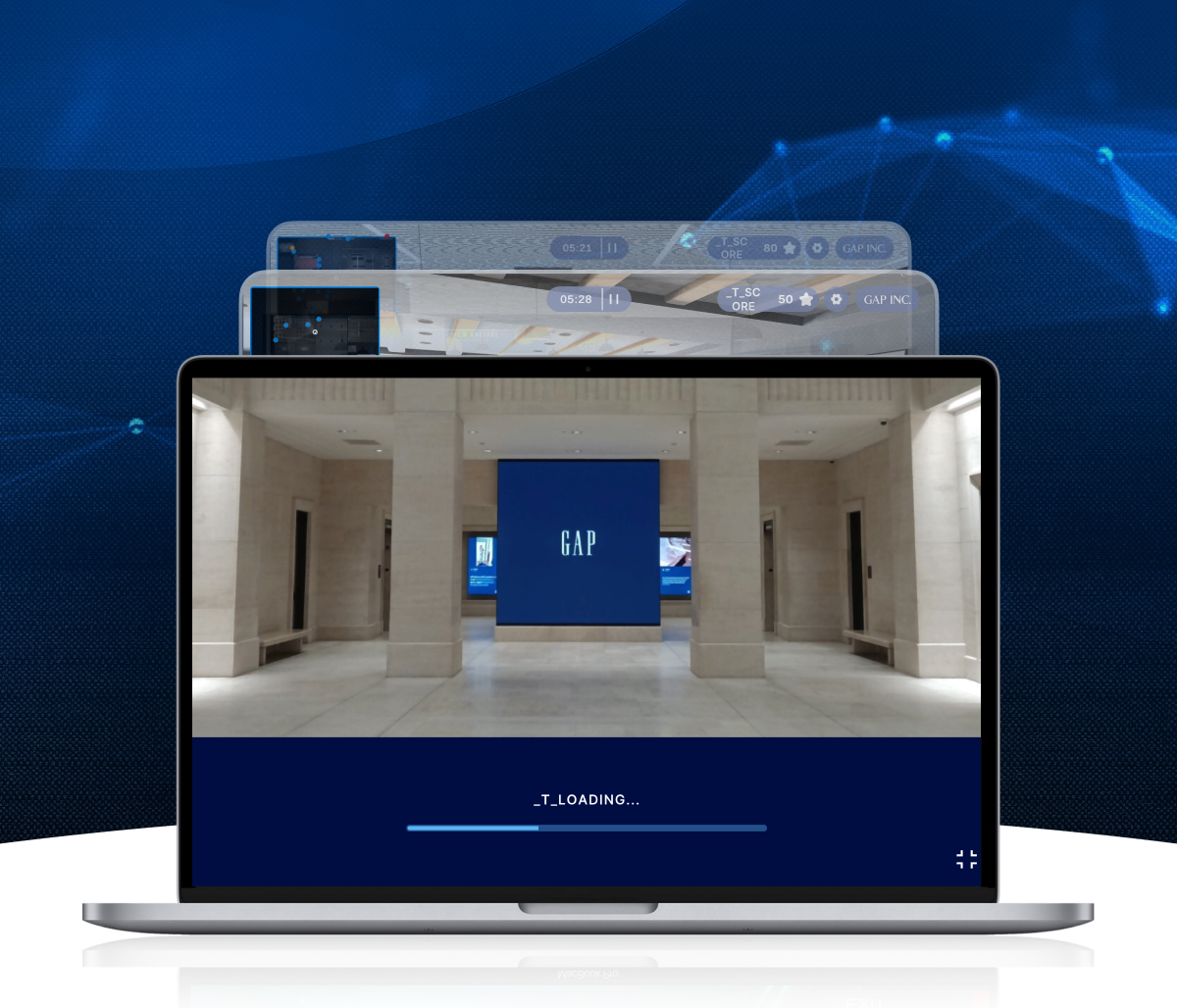
Program-Ace created a high-stakes virtual training for Gap Inc., where employees respond to active-shooter scenarios in real-time across stores, offices, and distribution centers. The experience emphasizes decision-making under pressure using scenario-based methodology.
Healthcare Heroes: Training with Scenarios
Healthcare training has greatly benefited from scenario-based learning. Medical professionals engage in realistic simulations, enhancing their skills and decision-making abilities. Examples include:
- Emergency response drills. Practitioners participate in scenarios replicating medical emergencies, such as cardiac arrests or mass casualty events, improving their response times and accuracy.
- Surgical simulations. Surgeons practice complex procedures in a controlled environment, reducing the risk of errors during actual surgeries.
- Patient interaction training. Medical staff engage in scenarios that mimic patient interactions, enhancing their communication and bedside manner.
Hospitals and medical schools utilize scenario-based learning to ensure their staff is well-prepared for real-life situations. For instance, the Mayo Clinic uses high-fidelity simulations to train its emergency response teams. Virtual reality simulations are also employed, offering immersive environments where trainees can practice without compromising patient safety. These methods improve technical skills and boost confidence and preparedness among healthcare providers.
Scenario-Based Learning in Schools
Schools are increasingly adopting scenario-based learning to enhance student engagement and understanding. By using realistic scenarios, educators provide students with practical applications of their knowledge. Examples include:
- Science experiments. Students conduct virtual experiments in simulated labs, allowing them to explore scientific concepts safely and interactively.
- History reenactments. Learners participate in scenarios that recreate historical events, deepening their understanding of historical contexts and perspectives.
- Problem-solving challenges. Students face real-world problems in various subjects, such as mathematics or environmental science, developing critical thinking and analytical skills.
Scenario-based learning in schools fosters a more engaging and effective educational experience. Programs like these are implemented in STEM education, where students use virtual reality to explore complex scientific phenomena. Schools also employ scenario-based learning for social studies, enabling students to experience historical events firsthand. These methods enhance knowledge retention and prepare students for real-life challenges by bridging the gap between theory and practice.
How to Implement Scenario-Based Learning?
Implementing scenario-based learning involves several steps to ensure its effectiveness and integration into your training program. By following these steps, you can create engaging and impactful learning experiences.
- Identify learning objectives. Clearly define the skills and knowledge you want trainees to acquire. This will guide the development of your scenarios and ensure they are relevant and targeted.
- Develop realistic scenarios. Create scenarios that mimic real-life situations relevant to your industry. Use input from subject matter experts to ensure accuracy and realism.
- Select the right tools. Choose scenario-based learning software that suits your needs. Look for features like interactive elements, immersive environments, and analytics to track learner progress.
- Incorporate multimedia elements. Enhance scenarios with videos, audio, and graphics to create a more engaging and immersive experience, helping learners better understand and retain the material.
- Pilot the scenarios. Test your scenarios with a small group of learners to gather feedback and make necessary adjustments. Ensure the scenarios are challenging yet achievable.
- Facilitate interactive sessions. Encourage learners to participate actively in scenarios. Use group discussions and debriefing sessions to reinforce learning points and allow trainees to share their experiences.
- Assess and refine. Continuously evaluate the effectiveness of your scenarios and make improvements based on learner feedback and performance data.
Scenario-based learning software, such as VR platforms and interactive training modules, can significantly enhance the learning experience. These tools provide immersive environments where trainees can practice and refine skills without real-world risks. Implementing these steps ensures that your scenario-based learning program is effective, engaging, and aligned with your training objectives.
Program-Ace Develops Lifesaving Emergency Evacuation Simulator

Program-Ace created an interactive multi-user simulation for a US construction company, enabling office staff to train for various emergency evacuation scenarios. Enhance your workplace safety with our innovative training solutions.
Challenges and Solutions in Scenario-Based Learning
Implementing scenario-based learning can be challenging, but addressing common issues with effective strategies ensures success. Understanding and overcoming these challenges can lead to more impactful training experiences.
Common Challenges
Scenario-based learning faces several common challenges. Developing realistic and relevant scenarios can be time-consuming and resource-intensive. Ensuring scenarios accurately reflect real-world situations requires input from subject matter experts, which can be difficult to coordinate. Additionally, integrating virtual training solutions into existing training programs may require significant technological investments and staff training.
Some learners may initially resist the new approach, preferring traditional methods. Tracking and assessing learner progress in interactive scenarios can also pose difficulties, as traditional assessment tools may not be suitable. Overcoming these challenges is essential to maximizing the benefits of scenario-based learning and ensuring it effectively enhances training outcomes.
Effective Strategies for Success
Successfully implementing scenario-based learning involves using effective strategies. To address the challenge of developing realistic scenarios, collaborate with industry experts to ensure accuracy and relevance. Utilizing scenario-based learning in VR training can significantly enhance the learning experience by providing immersive environments.
Here's a couple of strategies to consider:
- Invest in robust virtual training solutions that offer interactive elements and detailed analytics to track learner progress.
- Encourage learner engagement by incorporating multimedia elements and interactive sessions.
- Provide thorough training for staff to smoothly integrate new technologies into existing programs.
Continuous assessment and refinement based on learner feedback and performance data help maintain the effectiveness of the scenarios. These strategies ensure that scenario-based learning is impactful and aligns with training objectives.
The Delivery of the Next-Gen Military Training Simulator by Program-Ace
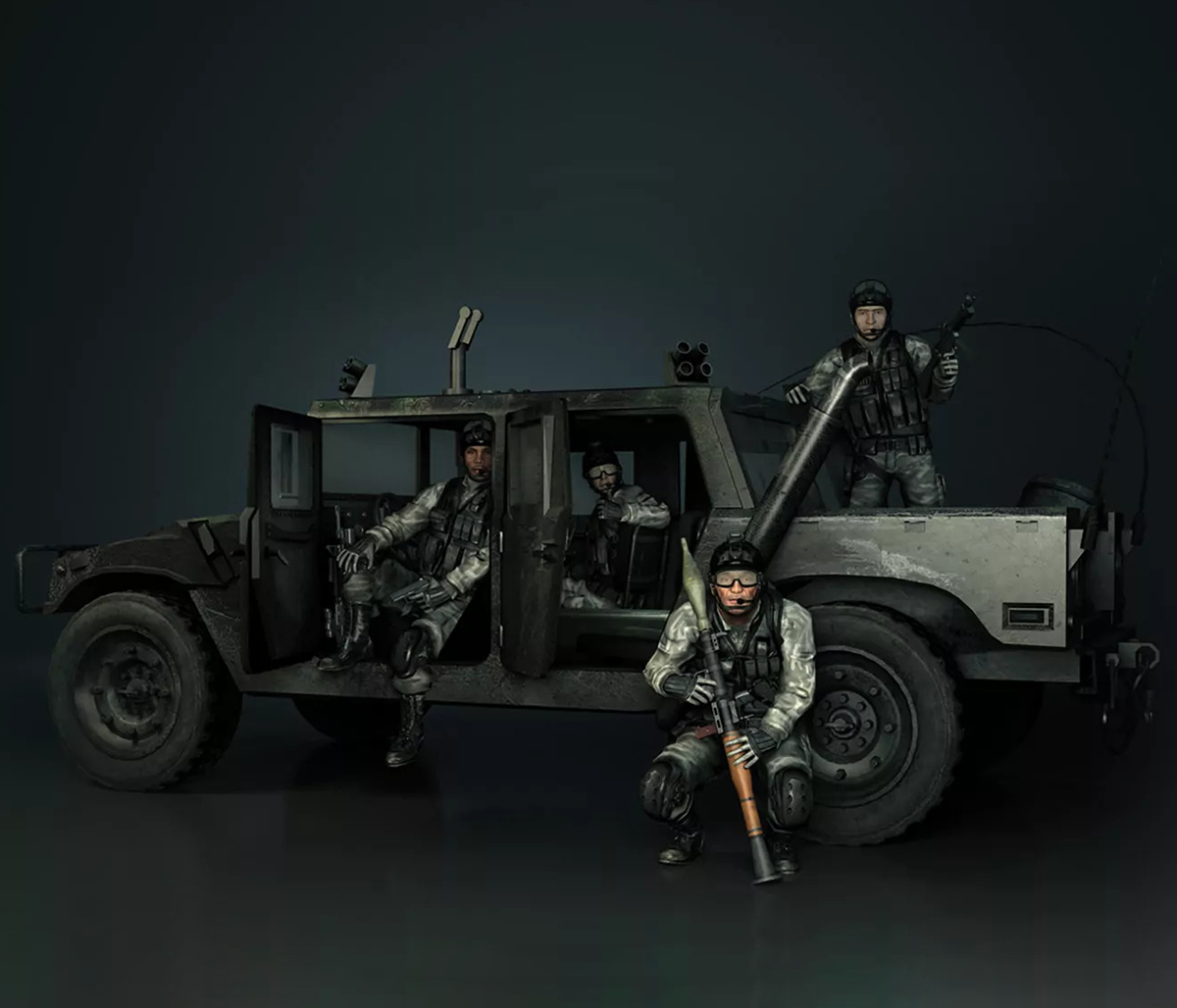
The Program-Ace team built an innovative virtual training simulator for military recruits, offering realistic multi-user scenarios for combat readiness. Improve your training with our solutions. Learn more about Program-Ace to transform your military training.
Build an Effective Scenario-Based Learning Software with Program-Ace
Building an effective scenario-based learning software requires expertise and innovation. Program-Ace, a professional software development service provider, offers high-quality experience in creating immersive and interactive training solutions. Our team of experts ensures your training software is tailored to your specific needs, incorporating realistic scenarios and advanced technology.
By partnering with Program-Ace, you gain access to cutting-edge virtual training solutions that enhance learner engagement and retention. Our comprehensive approach includes detailed scenario development, seamless integration with existing systems, and continuous support.
Contact us without any further hesitation to change your training programs forever with effective scenario-based learning software. Ensure your team is prepared for real-world challenges with Program-Ace’s expertise.
